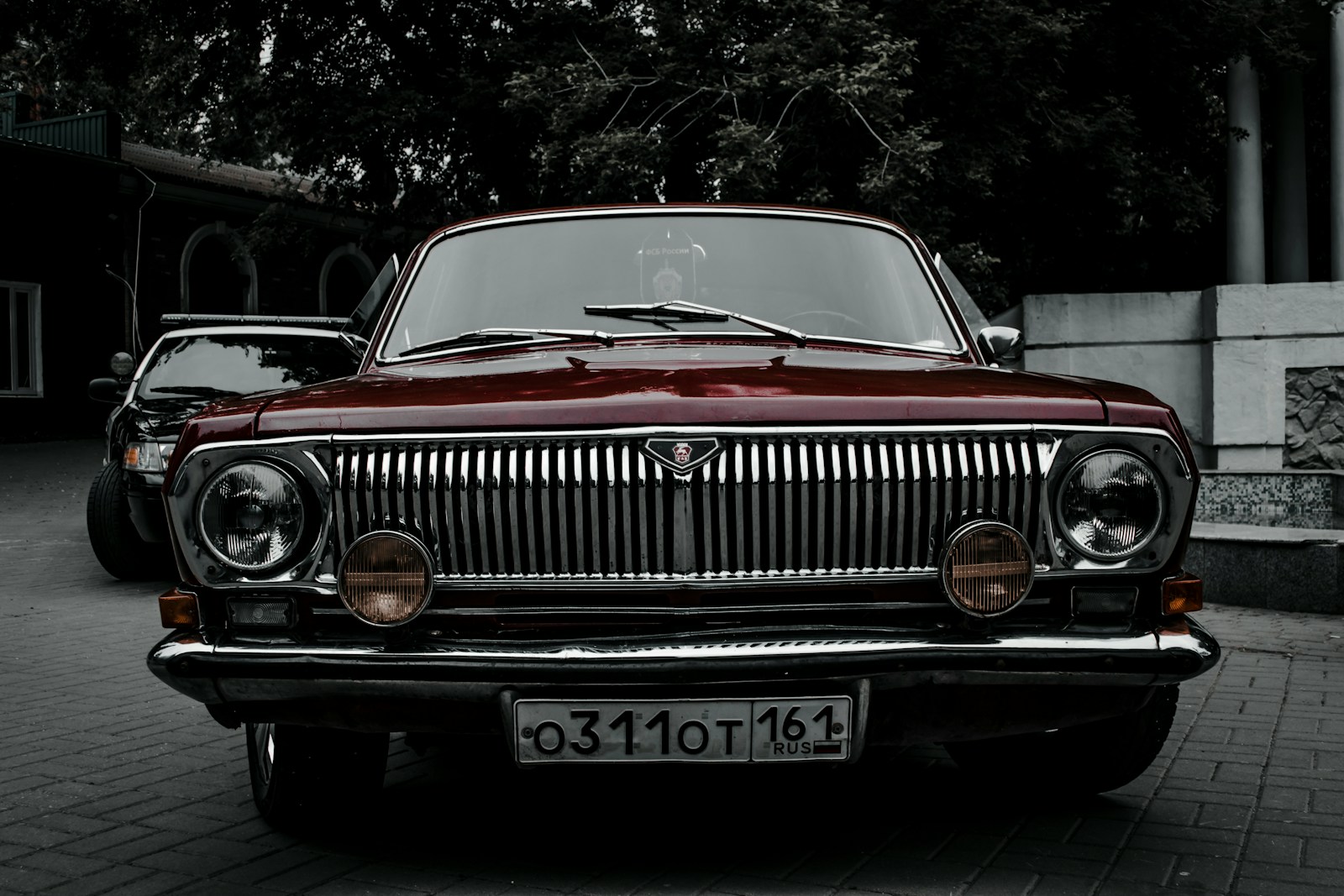
When the conversation turns to iconic muscle cars of the ’70s, the mind almost invariably conjures images of immense big-block V8s, thundering down the street with a visceral roar and an appetite for asphalt. These legends, with their massive displacements and headline-grabbing horsepower figures, rightly earned their place in automotive lore. However, this popular narrative often overshadows a crucial chapter in muscle car history: the era of the small-block V8, where innovation and engineering prowess delivered exhilarating performance in a more refined, often lighter, and surprisingly agile package.
These machines, though perhaps not always the poster cars of their day, proved conclusively that raw power wasn’t solely the domain of the largest engines. Instead, they leveraged high-revving capabilities, efficient designs, and smart power-to-weight ratios to carve out their own niche. Many were built in more limited numbers, flew under the radar of the mainstream, or were simply overshadowed by their more flamboyant siblings, making them rare finds and highly collectible today for those in the know. They represent a smart alternative for enthusiasts looking to experience the thrill of classic American muscle without the exorbitant price tags associated with their more famous, big-block counterparts.
For the passionate automotive enthusiast who craves the authentic experience of a classic V8 muscle car but operates within a realistic budget, there’s fantastic news. The landscape of classic motoring is still rich with options that offer a satisfying blend of heritage, engaging performance, and undeniable presence, all without demanding a king’s ransom. This article delves deep into 14 such forgotten legends – machines that truly embody the spirit of muscle and provide an accessible entry point into a cherished era. Join us as we uncover these unsung heroes, starting with a closer look at the first seven contenders that redefined what a small-block could do.

1. **1970 Chevrolet Camaro Z/28 LT1**
The 1970 Chevrolet Camaro Z/28 LT1 stands as a testament to the fact that brute force wasn’t the only path to performance glory in the muscle car era. While many manufacturers were busy stuffing ever-larger engines into their offerings, Chevrolet engineers took a more sophisticated approach with the Z/28. This model was not just about raw horsepower; it was a finely tuned instrument built for speed and exceptional handling, distinguishing itself from its contemporaries with a focus on agility and high-RPM thrills rather than sheer displacement.
At the heart of this formidable machine was a high-revving 350 cubic-inch LT1 V8, a marvel of small-block engineering that punched well above its weight class. Rated at a robust 360 horsepower, this engine was paired exclusively with a Muncie four-speed manual transmission, signaling its clear intentions as a driver’s car. The LT1 featured a solid-lifter camshaft, four-bolt main caps, and a large-port cylinder head design, all contributing to its incredible ability to sustain high RPMs and deliver power efficiently through the rev band, making it an absolute joy on both the drag strip and winding back roads.
What truly set the 1970 Z/28 LT1 apart was its balanced approach to performance. It wasn’t just fast in a straight line; it could genuinely carve corners, thanks to its specially tuned suspension and lighter overall weight compared to its big-block brethren. This car was engineered for a specific purpose: to dominate in Trans Am racing, and its road-going version offered enthusiasts a direct taste of that track-ready pedigree. Its relatively modest displacement, by muscle car standards, belied its true capabilities, proving that an expertly crafted small-block could deliver truly exhilarating and competitive performance without needing a massive footprint under the hood.
Today, the 1970 Camaro Z/28 LT1 is highly regarded by collectors as a rare and significant piece of Chevrolet’s performance history. Its combination of a high-performance small-block, track-honed dynamics, and relatively limited production numbers makes it a sought-after classic. For those looking for a muscle car that offers more than just straight-line speed, but also a refined driving experience with genuine racing heritage, the Z/28 LT1 represents an exceptional and often overlooked choice, delivering a potent blend of style and substance that continues to impress.
Name: Chevrolet Camaro (fourth generation)
Caption: 1993 Chevrolet Camaro Z28
Manufacturer: Chevrolet
Production: November 1992 – August 27, 2002
ModelYears: 1993–2002
Assembly: Sainte-Thérèse, Quebec
Class: Pony car, Muscle car
BodyStyle: ubl
Platform: GM F platform
Related: ubl
Layout: Front-engine, rear-wheel drive layout
Engine: ubl
Transmission: ubl
Wheelbase: cvt
Length: ubl
Width: cvt
Height: ubl
Weight: cvt
Predecessor: Chevrolet Camaro (third generation)
Successor: Chevrolet Camaro (fifth generation)
Designer: ubl
Categories: 2000s cars, All articles needing additional references, All articles with dead external links, All articles with failed verification, Articles needing additional references from July 2020
Get more information about: Chevrolet Camaro (fourth generation)
Buying a high-performing used car >>>
Brand: Chevrolet Model: Camaro Z/28 LT1
Price: $24,987 Mileage: 84,683 mi.
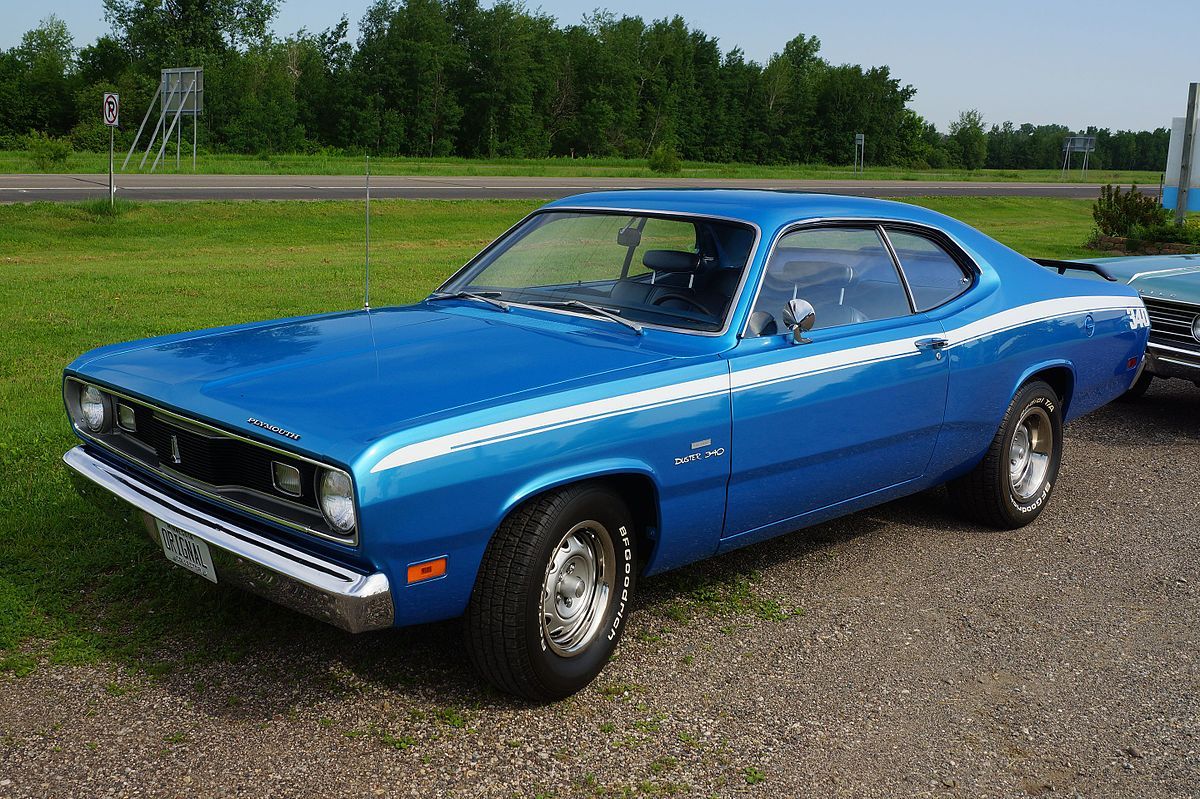
2. **1970 Plymouth Duster 340**
In an era dominated by larger, more imposing muscle cars, the 1970 Plymouth Duster 340 emerged as a delightful and highly effective underdog, proving that smaller, lighter vehicles could deliver colossal performance. This unassuming compact offered a refreshing alternative to its bigger, heavier stablemates like the Road Runner and ‘Cuda, appealing to a different segment of muscle car enthusiasts who prioritized agility, a nimble chassis, and a surprising punch without the associated premium price tag. Its understated appearance often caught competitors off guard, solidifying its reputation as a genuine “sleeper.”
Underneath its modest hood resided a high-performance 340 cubic-inch V8 engine, an engineering marvel from Mopar that was surprisingly potent for its size. Rated at 275 horsepower, this small-block was known for its robust torque delivery and eagerness to rev, allowing the Duster to launch off the line with impressive force. Its lightweight A-body platform meant that every horsepower counted for more, enabling the Duster 340 to not just keep pace with, but often outrun, many larger and supposedly more powerful muscle cars of its time, much to the astonishment of unsuspecting challengers.
The Duster 340 was also lauded for its affordability, making it an incredibly popular choice among younger buyers and those on a budget who craved genuine muscle car thrills. It provided an accessible entry point into high-performance motoring, offering a potent V8, optional four-speed manual transmissions, and aggressive styling cues in a package that didn’t break the bank. This combination of speed, light weight, and value made it an instant classic among its original owners, fostering a loyal following that persists to this day.
Finding a genuine 1970 Plymouth Duster 340 in excellent condition today is an increasingly rare feat. Its original affordability meant many were driven hard, modified extensively, or fell victim to the rigors of time. However, for the discerning collector or enthusiast, a well-preserved Duster 340 represents an exceptional investment and a thoroughly enjoyable driving experience. It embodies the essence of an underrated muscle car, offering classic Mopar styling and undeniable performance that continues to surprise and delight, all while often being more financially attainable than its Hemi-powered cousins.
Name: Plymouth Duster
Caption: 1970 Plymouth Duster 340
Manufacturer: Plymouth (automobile)
Production: 1969–1976
ModelYears: 1970–1976
Assembly: Hamtramck, Michigan,Commerce, California,Fenton, Missouri,Windsor, Ontario
Designer: Milt Antonick and Neil Walling
Class: Compact car
BodyStyle: coupe
Layout: Front-engine, rear-wheel-drive layout
Platform: Chrysler A platform
Related: Plymouth Valiant,Dodge Dart
Engine: {{convert,198,cuin,L,1,abbr=on,Chrysler Slant 6 engine,Straight-six engine
Abbr: on
Transmission: manual transmission,4-speed manual,TorqueFlite
Wheelbase: 108.0 in
Predecessor: Plymouth Barracuda
Successor: Plymouth Volare,Plymouth Gran Fury
Categories: 1970s cars, All Wikipedia articles needing clarification, All articles with dead YouTube links, Articles with dead YouTube links from February 2022, Articles with short description
Get more information about: Plymouth Duster
Buying a high-performing used car >>>
Brand: Plymouth Model: Duster 340
Price: $24,987 Mileage: 84,683 mi.
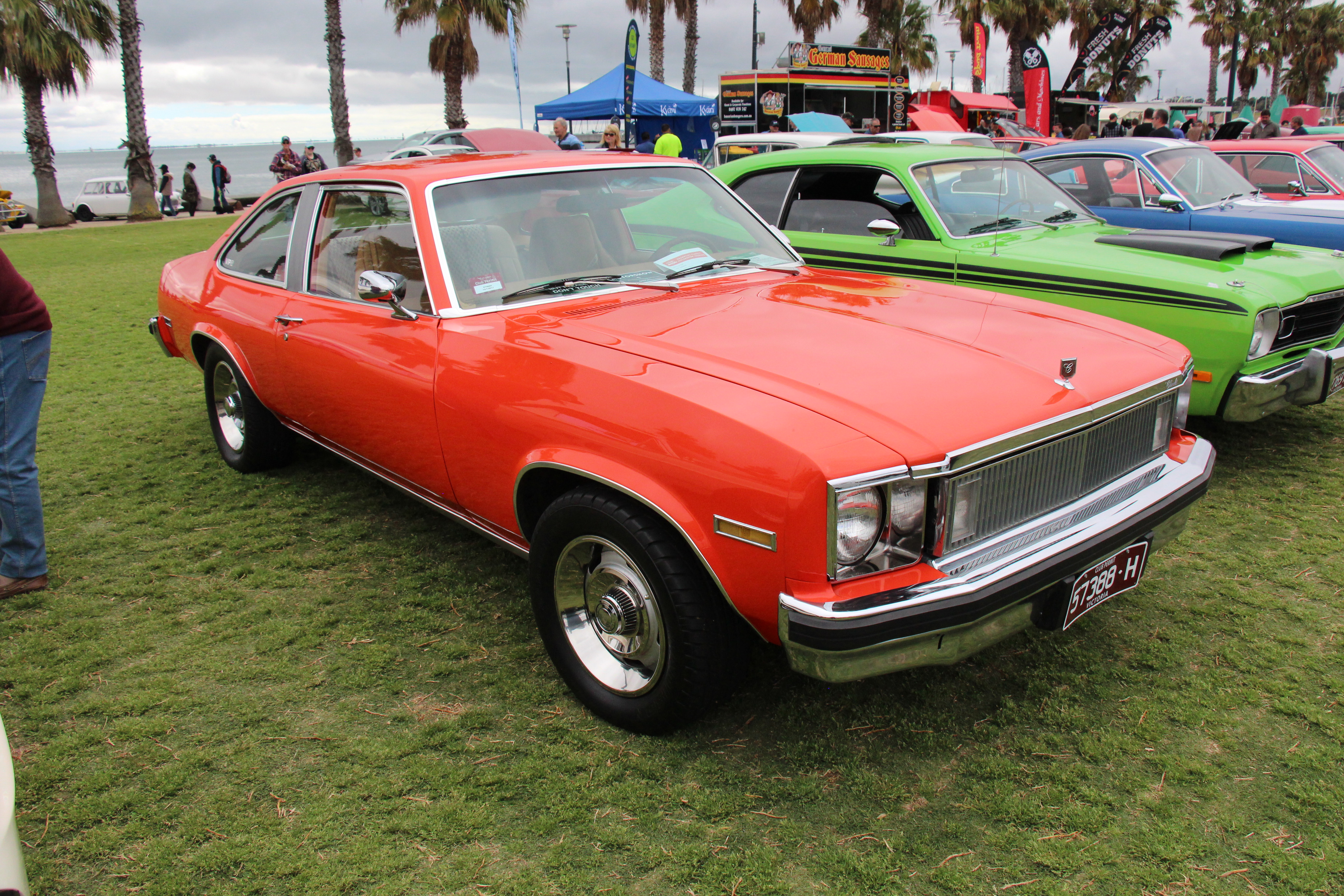
3. **1975 Chevrolet Nova SS 350**
The mid-1970s presented a challenging landscape for muscle cars, with tightening emissions regulations and a shift in consumer preferences away from raw power. In this context, the 1975 Chevrolet Nova SS 350 emerged as a quiet but capable contender, often overlooked in favor of more visually striking or historically dominant models. While it might not have boasted the stratospheric horsepower figures of earlier muscle machines, it still offered a solid foundation of performance and a subtle charm that made it an intriguing option for those who appreciated understated power.
Beneath its seemingly simple exterior, the 1975 Nova SS 350 housed a robust 350 cubic-inch V8 engine. While factory-rated at a more modest 155 horsepower, this engine provided a strong torque curve and a reliable power plant, especially when compared to other cars struggling with the new emissions standards. More importantly, the Nova’s accessible engineering and the inherent strength of its small-block V8 meant it possessed significant untapped potential, making it a favorite for enthusiasts keen on performance modifications and upgrades.
The true allure of the 1975 Nova SS 350 lay in its “sleeper” appeal. Its relatively unassuming appearance allowed it to blend seamlessly into everyday traffic, only hinting at its performance capabilities to those who recognized the SS badging or the subtle performance upgrades. This duality made it a perfect canvas for customizers and racers who sought to build a formidable street machine without drawing excessive attention, allowing the car’s true power to speak for itself when the time was right for a challenge.
Today, the 1975 Nova SS 350 remains a rare find among collectors, particularly original, well-maintained examples. Its blend of classic Chevy styling, a capable small-block V8, and the inherent modifiability of its platform make it a compelling choice for those seeking a vintage muscle car that offers both heritage and the opportunity for personalized performance enhancements. It’s a testament to the enduring appeal of Chevrolet’s small-block and a genuinely underrated gem that provides a satisfying muscle car experience on a budget.
Caption: 1963 Chevrolet Chevy II 300 4-door sedan
Name: Chevrolet Chevy II / Nova
Manufacturer: unbulleted list
ModelYears: unbulleted list
Production: unbulleted list
Class: unbulleted list
Successor: unbulleted list
Categories: 1970s cars, 1980s cars, All articles needing additional references, Articles needing additional references from March 2025, Articles with short description
Get more information about: Chevrolet Chevy II / Nova
Buying a high-performing used car >>>
Brand: Chevrolet Model: Nova SS 350
Price: $24,987 Mileage: 84,683 mi.

4. **1974 AMC Javelin AMX 401**
American Motors Corporation (AMC) consistently carved out its own unique niche in the competitive muscle car market, and the 1974 Javelin AMX 401 stands as a proud, albeit often forgotten, example of its distinctive approach. While larger manufacturers often garnered more mainstream attention, AMC offered a blend of bold styling and serious performance that, in retrospect, deserves far more recognition. The Javelin AMX 401, in particular, was a formidable machine that has largely been overlooked in the annals of muscle car history.
The heart of this powerful car was the AMC 401 cubic-inch V8, which, despite its large displacement, is often categorized within the AMC small-block engine family alongside its 360 and 390 counterparts. In its 1974 iteration, this potent V8 still produced an impressive 330 horsepower, a significant figure in an era where emissions regulations were steadily choking the power out of many performance engines. This formidable power plant gave the Javelin AMX 401 truly impressive speed and acceleration, allowing it to hold its own against more celebrated competitors.
Beyond its mechanical prowess, the Javelin AMX 401 commanded attention with its strikingly bold and aggressive styling. Its distinctive “long hood, short deck” proportions, combined with bulging fenders and a unique front fascia, set it apart from anything else on the road. This audacious design reflected AMC’s willingness to push aesthetic boundaries, creating a car that was undeniably muscular and visually arresting. The AMX trim added further sporting enhancements, underscoring its performance intentions.
Given its bold styling and potent 401 V8, it’s surprising how often the 1974 Javelin AMX 401 is overlooked by enthusiasts and collectors. Its rare production numbers further contribute to its unique status, making a genuine AMX 401 a challenging but rewarding find today. For those seeking a muscle car that offers a distinctive alternative to the more common Ford, Chevy, and Mopar offerings, the Javelin AMX 401 provides a rich blend of historical significance, serious power, and an undeniable ’70s swagger that makes it a unique and compelling piece of muscle car history.
Name: AMC Javelin
Caption: 1971 AMC Javelin SST
Manufacturer: American Motors Corporation
Aka: unbulleted list
Production: 1967–1974
ModelYears: 1968–1974
Assembly: unbulleted list
Designer: Dick Teague
Class: unbulleted list
BodyStyle: hardtop
Layout: Front-engine, rear-wheel drive layout
Platform: AMC’s “junior” cars
Predecessor: Rambler Marlin
Categories: 1970s cars, AMC vehicles, All articles that may contain original research, All articles with dead external links, All articles with unsourced statements
Get more information about: AMC Javelin
Buying a high-performing used car >>>
Brand: AMC Model: Javelin AMX 401
Price: $24,987 Mileage: 84,683 mi.

5. **1977 Dodge Aspen R/T 360**
As the muscle car era waned in the late 1970s, strict emissions regulations and the burgeoning oil crisis forced manufacturers to scale back performance significantly. Yet, amidst these challenges, Dodge made a commendable effort to keep the flame alive, offering vehicles like the 1977 Dodge Aspen R/T 360. This car represents a fascinating, albeit constrained, attempt to deliver a budget-friendly muscle car experience during a period when true high-performance machines were becoming increasingly rare and unfeasible. It was Mopar’s answer for enthusiasts on a tighter budget looking for a bit of sport.
The heart of the Aspen R/T’s performance was its optional 360 cubic-inch V8 engine. While this small-block powerplant undoubtedly provided some much-needed grunt, its output was heavily curtailed by the era’s stringent emissions rules, meaning it didn’t roar with the same ferocity as its early-70s predecessors. Nevertheless, for the time, it offered respectable power and torque, making the Aspen R/T one of the more spirited options available in its class. With the right gearing and careful weight savings, these cars possessed the potential to surprise slower competition.
The Aspen R/T’s appeal extended beyond just its engine. Built on a relatively lightweight, rear-wheel-drive platform, it offered decent handling characteristics for a car of its vintage. This combination of a V8 engine and traditional RWD dynamics made it an attractive proposition for those looking to engage with their vehicle in a more visceral way. Furthermore, the car benefited from decent aftermarket support, allowing owners to unlock more of its inherent performance potential through modifications, which was a significant draw for the enthusiast community.
Despite its limitations and the challenging market conditions, the 1977 Dodge Aspen R/T 360 holds a special place as a rare Mopar find today. Its production numbers were solid but not overwhelming, meaning there are still surviving examples available at reasonable prices. For collectors and drivers seeking an accessible and engaging piece of late-’70s muscle car history, the Aspen R/T offers a unique blend of Mopar heritage, V8 power, and a foundation for enjoyable customization, representing an intriguing and budget-conscious entry into classic American performance.
Car Model Information: 1976 Dodge Aspen
Caption: Dodge Aspen coupe
Name: Plymouth Volaré / Dodge Aspen
Manufacturer: Chrysler
Production: 1976–1980
ModelYears: 1976–1980
Class: Compact car
Layout: Front-engine, rear-wheel-drive layout
Platform: Chrysler F platform
Assembly: Mexico City,Mexico
BodyStyle: station wagon,sedan (car),coupe
Engine: {{convert,225,CID,L,1,abbr=on,Chrysler Slant-6 engine
Abbr: on (wagon)
Transmission: manual transmission,TorqueFlite,A998/A999 3-speed TorqueFlite automatic,manual transmission
Predecessor: Plymouth Valiant
Successor: Plymouth Reliant,Dodge 400
Aka: ubl
Wheelbase: {{convert,108.7,in,mm,0,abbr=on
Weight: 3200 lb
Length: {{convert,198.8,in,mm,0,abbr=on
Width: 73.3 in
Height: {{convert,53.3,in,mm,0,abbr=on
Related: Monteverdi Sierra
Categories: All articles needing additional references, All articles with unsourced statements, Articles needing additional references from June 2025, Articles with short description, Articles with unsourced statements from December 2008
Get more information about: Dodge Aspen
Buying a high-performing used car >>>
Brand: Dodge Model: Aspen
Price: $12,500 Mileage: 68,590 mi.
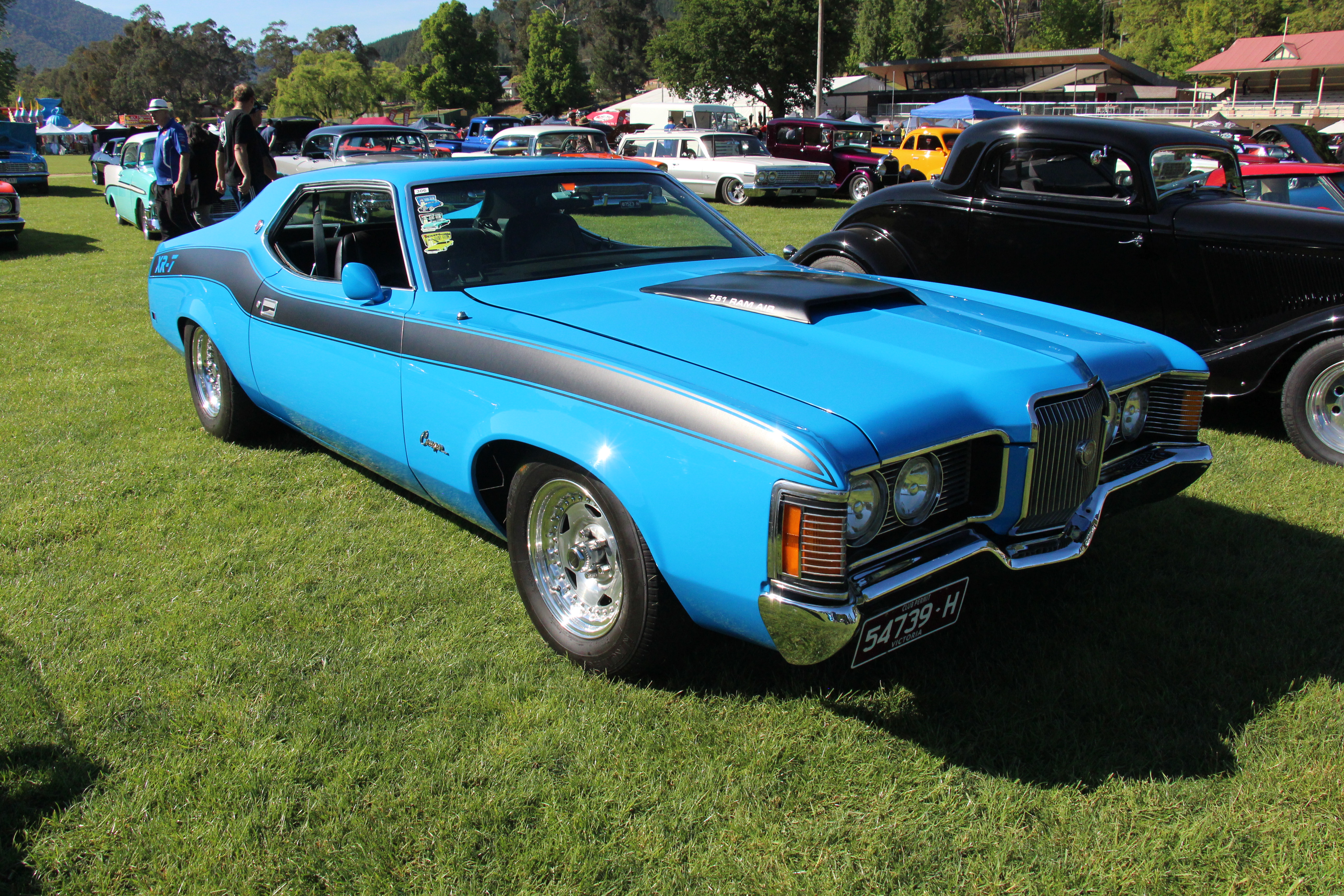
6. **1972 Mercury Cougar XR-7 351 Cobra Jet**
The Mercury Cougar, often overshadowed by its more famous Ford Mustang cousin, consistently offered a distinct blend of sophistication, comfort, and undeniable performance. The 1972 Mercury Cougar XR-7 351 Cobra Jet exemplifies this unique proposition, combining the aggressive capabilities of a true muscle car with the luxurious appointments of a personal luxury coupe. This particular model, with its potent engine and stylish demeanor, was a rare beast that offered a more refined take on the muscle car formula, appealing to those who sought power without sacrificing comfort.
Under the hood, the XR-7 could be optioned with the formidable 351 cubic-inch Cobra Jet V8 engine. This small-block powerhouse was a significant upgrade, delivering strong horsepower and abundant torque, ensuring that the Cougar XR-7 was more than capable of holding its own in any stoplight challenge. The Cobra Jet designation implied serious performance, incorporating features like larger valves, a four-barrel carburetor, and a functional ram-air induction system in some configurations, all designed to maximize the engine’s breathing and power output, providing exhilarating acceleration.
What truly set the Cougar XR-7 apart was its dual personality. It offered the kind of raw power typically associated with muscle cars, yet it wrapped that performance in a package designed for comfort and elegance. The XR-7 trim level brought a more upscale interior, distinctive styling cues, and a smoother ride, making it equally adept at spirited driving or long-distance cruising. This blend of attributes made it a compelling choice for buyers who wanted both visceral excitement and a degree of refinement that many stripped-down muscle cars simply didn’t offer.
With only a limited number of 1972 Mercury Cougar XR-7 351 Cobra Jet models ever built, this rare Cougar has become an increasingly hard-to-find muscle car today. Its combination of a potent small-block Cobra Jet engine, luxurious amenities, and distinctive styling makes it a highly desirable classic for collectors. For enthusiasts looking for a muscle car that stands out from the crowd and offers a compelling mix of performance and panache, the XR-7 351 Cobra Jet is a truly underrated and captivating option, delivering both power and a touch of class.
Car Model Information: 1995 Mercury Cougar XR7
Name: Mercury Cougar
Caption: 1969 Mercury Cougar (first generation)
Manufacturer: Mercury (automobile)
Layout: Front-engine, rear-wheel-drive layout
ModelYears: 1967–1997,1999–2002
Class: Pony car,Personal luxury car,Mid-size car,Sport compact
Categories: 1960s cars, 1970s cars, 1980s cars, 1990s cars, 2000s cars
Get more information about: Mercury Cougar
Buying a high-performing used car >>>
Brand: Mercury Model: Cougar
Price: $10,995 Mileage: 37,589 mi.

7. **1974 Pontiac Ventura GTO**
By 1974, the once-unassailable legend of the Pontiac GTO was undergoing a significant transformation, adapting to changing market demands and evolving performance landscapes. The iconic GTO, once a standalone model, morphed into a trim package available on the Ventura, Pontiac’s version of the more compact Chevrolet Nova. This shift, while seen by some as a dilution of the GTO’s legacy, paradoxically created one of the most accessible and genuinely underrated ways to own a piece of GTO history on a budget, offering classic muscle car appeal without the stratospheric prices of its earlier brethren.
The 1974 Ventura GTO came standard with a 350 cubic-inch V8 engine, which, in metric terms, translates to approximately 5.7 liters. While this powerplant might not have delivered the raw, earth-shaking punch of the mighty 389s or 400s from the GTO’s golden age, it was still a legitimate performer. It offered a respectable amount of horsepower and torque for its time, especially when considering the stricter emissions regulations that had begun to constrain engine outputs across the industry. This small-block V8 provided a solid foundation for spirited driving and a satisfying rumble.
One of the primary reasons the 1974 Ventura GTO has remained an underdog, and thus more affordable, is its perception among enthusiasts. Many buyers and critics at the time overlooked it due to its humble, economy-car roots derived from the X-body platform shared with the Nova. This meant it didn’t command the same prestige or attention as earlier GTOs, keeping its market value relatively low compared to its more celebrated predecessors. However, this oversight has become a boon for today’s budget-conscious muscle car aficionado.
Today, the 1974 Pontiac Ventura GTO represents one of the cheapest and most practical ways to get a genuine GTO badge on your fender. Its relatively simple mechanics make it easy to maintain and tune, and its shared platform with the Nova means parts are readily available. For those willing to look beyond pure pedigree and appreciate a solid, small-block-powered muscle car with strong upgrade potential and a storied nameplate, the Ventura GTO is an exceptional, often-overlooked value. It’s a true muscle car 101, offering a blend of heritage and performance that won’t break the bank.
Continuing our journey through the annals of overlooked automotive brilliance, we now turn our attention to seven more small-block V8 muscle cars that, despite their undeniable credentials, often don’t receive the widespread recognition they so richly deserve. These machines offer a potent mix of engineering ingenuity, distinctive styling, and thrilling performance, proving that you don’t need a king’s ransom to own a piece of authentic American muscle. They represent smart, budget-friendly choices for enthusiasts who appreciate depth and history beyond the usual marquee names.
Name: Pontiac GTO
Caption: 2005 Pontiac GTO
Manufacturer: Pontiac (automobile),Holden
Class: Mid-size car,Compact car,Mid-size car
Production: 1963–1974,2003–2006
Predecessor: Pontiac Tempest
Layout: Front-engine, rear-wheel-drive layout
ModelYears: 1964-1974 2004-2006
Categories: 1970s cars, 2000s cars, All articles with unsourced statements, Articles with short description, Articles with unsourced statements from October 2008
Get more information about: Pontiac GTO
Buying a high-performing used car >>>
Brand: Pontiac Model: Ventura GTO
Price: $24,987 Mileage: 84,683 mi.

8. **1971 Ford Mustang Boss 302**
The 1971 Ford Mustang Boss 302 represents the swan song of an iconic racing pedigree, being the final iteration of Ford’s high-revving muscle car explicitly engineered to dominate in Trans Am racing. This wasn’t merely a brute-force machine; it was a finely balanced weapon, designed from the ground up to be a formidable competitor on the track and an exhilarating performer on the street. Its very existence was a testament to Ford’s commitment to motorsport and delivering enthusiast-focused vehicles.
At its core was a powerful 302 cubic-inch V8 engine, specifically tuned for aggressive throttle response and high-RPM power delivery. Coupled with its sharp handling characteristics, the Boss 302 offered a driving experience that was both engaging and immensely rewarding, allowing drivers to truly connect with the machine. This specialized engineering made it distinct from other Mustangs, emphasizing precision and agility over pure straight-line acceleration, a characteristic highly valued by performance drivers.
Beyond its mechanical prowess, the 1971 Boss 302 commanded attention with its aggressive styling, featuring distinctive visual cues that left no doubt about its performance intentions. Yet, despite its formidable capabilities and racing heritage, only a limited number were built, making it one of the rarest Mustangs of its era. This scarcity, combined with its direct link to Trans Am glory, solidifies its position as an underrated gem for collectors seeking a truly significant piece of Mustang history that delivers authentic track-ready excitement.
Layout: FR layout
Manufacturer: Ford Motor Company
Production: 1969–1970 and 2012–2013
Name: Boss 302 Mustang
Assembly: Dearborn, Michigan
Designer: Larry Shinoda
Engine: Ford Boss 302 engine,Overhead valve,V8 engine
Transmission: Manual transmission
Related: Ford Mustang
Class: Muscle car
BodyStyle: Fastback,Coupe
Categories: All articles needing additional references, All articles with unsourced statements, Articles needing additional references from June 2023, Articles with short description, Articles with unsourced statements from March 2024
Get more information about: Boss 302 Mustang
Buying a high-performing used car >>>
Brand: Ford Model: Mustang Boss 302
Price: $24,987 Mileage: 84,683 mi.

9. **1978 Chevrolet Corvette L82**
As the muscle car era limped through the late 1970s, facing the formidable challenges of stricter emissions regulations and rising fuel costs, genuine performance options became increasingly scarce. In this context, the 1978 Chevrolet Corvette L82 emerged as a beacon of hope, a small-block V8 offering that stood out as one of the best performance choices available in an otherwise constrained market. It was a clear demonstration of Chevrolet’s enduring commitment to the sports car segment.
Underneath the iconic fiberglass body, the Corvette L82 housed a robust 350 cubic-inch small-block V8 engine. While its factory-rated output of 220 horsepower might seem modest by today’s standards, it was remarkably strong for the era, especially when many other performance cars were struggling to produce even half that figure. This engine provided a satisfying blend of power and torque, delivering exhilarating acceleration and a quintessential V8 soundtrack that enthusiasts craved during a challenging period for American performance.
The Corvette itself has always enjoyed widespread popularity, but the L82 model, with its specific performance enhancements, was a rarer find within the lineup. Its unique combination of a higher-output small-block engine and the Corvette’s inherently capable chassis made it a particularly desirable variant. This relative rarity, coupled with its historical significance as a performance highlight in a difficult decade, makes the 1978 Corvette L82 a valuable and often-overlooked piece of muscle car history today. For those seeking a late-’70s performance car, it represents a compelling and engaging option.
Car Model Information: 2023 Chevrolet Corvette 3LZ
Name: Chevrolet Corvette
Caption: 2021 Chevrolet Corvette C8
Manufacturer: Chevrolet
Production: 1953–present
ModelYears: bulleted list
Assembly: bulleted list
Class: Sports car
BodyStyle: coupé
Layout: Front-engine, rear-wheel-drive layout,Rear mid-engine, rear-wheel-drive layout
Categories: 1950s cars, 1960s cars, 1970s cars, 1980s cars, 1990s cars
Get more information about: Chevrolet Corvette
Buying a high-performing used car >>>
Brand: Chevrolet Model: Corvette
Price: $132,990 Mileage: 1,614 mi.

10. **1971 Oldsmobile Cutlass W-31**
In the fiercely competitive landscape of early 1970s muscle cars, Oldsmobile consistently delivered sophisticated performance, and the 1971 Cutlass W-31 stands as a compelling testament to their engineering prowess. This model, often overshadowed by its more celebrated stablemates and competitors, was a meticulously crafted small-block machine designed to deliver impressive speed and agility. It proved that Oldsmobile could pack a significant punch without relying on massive displacement.
At the heart of the Cutlass W-31 was a potent 350 cubic-inch V8 engine, an engineering marvel that churned out a formidable 325 horsepower. This output was exceptionally strong for a small-block at the time, enabling the W-31 to not just keep pace with, but often outperform, many cars equipped with larger, heavier engines. This lightweight, high-performance approach highlighted Oldsmobile’s commitment to a balanced power-to-weight ratio, resulting in a remarkably spirited driving experience.
The true allure of the 1971 Cutlass W-31 lies in its status as a hidden muscle car. With only a limited number ever produced, it became a rare beast capable of surprising unsuspecting challengers. Its low production numbers and incredible performance capabilities mean that today, the W-31 is highly valued by discerning collectors. For enthusiasts who appreciate rarity, genuine small-block performance, and a car that flies under the radar while delivering big speed, the Cutlass W-31 is an exceptional and highly sought-after classic.
Caption: 1971 Oldsmobile Cutlass Supreme Convertible
Name: Oldsmobile Cutlass
Manufacturer: Oldsmobile
Production: 1961–1999
Successor: Oldsmobile Intrigue
Class: Compact car
Categories: 1970s cars, 1980s cars, 1990s cars, All Wikipedia articles needing clarification, All articles that may contain original research
Get more information about: Oldsmobile Cutlass
Buying a high-performing used car >>>
Brand: Oldsmobile Model: Cutlass W-31
Price: $24,987 Mileage: 84,683 mi.
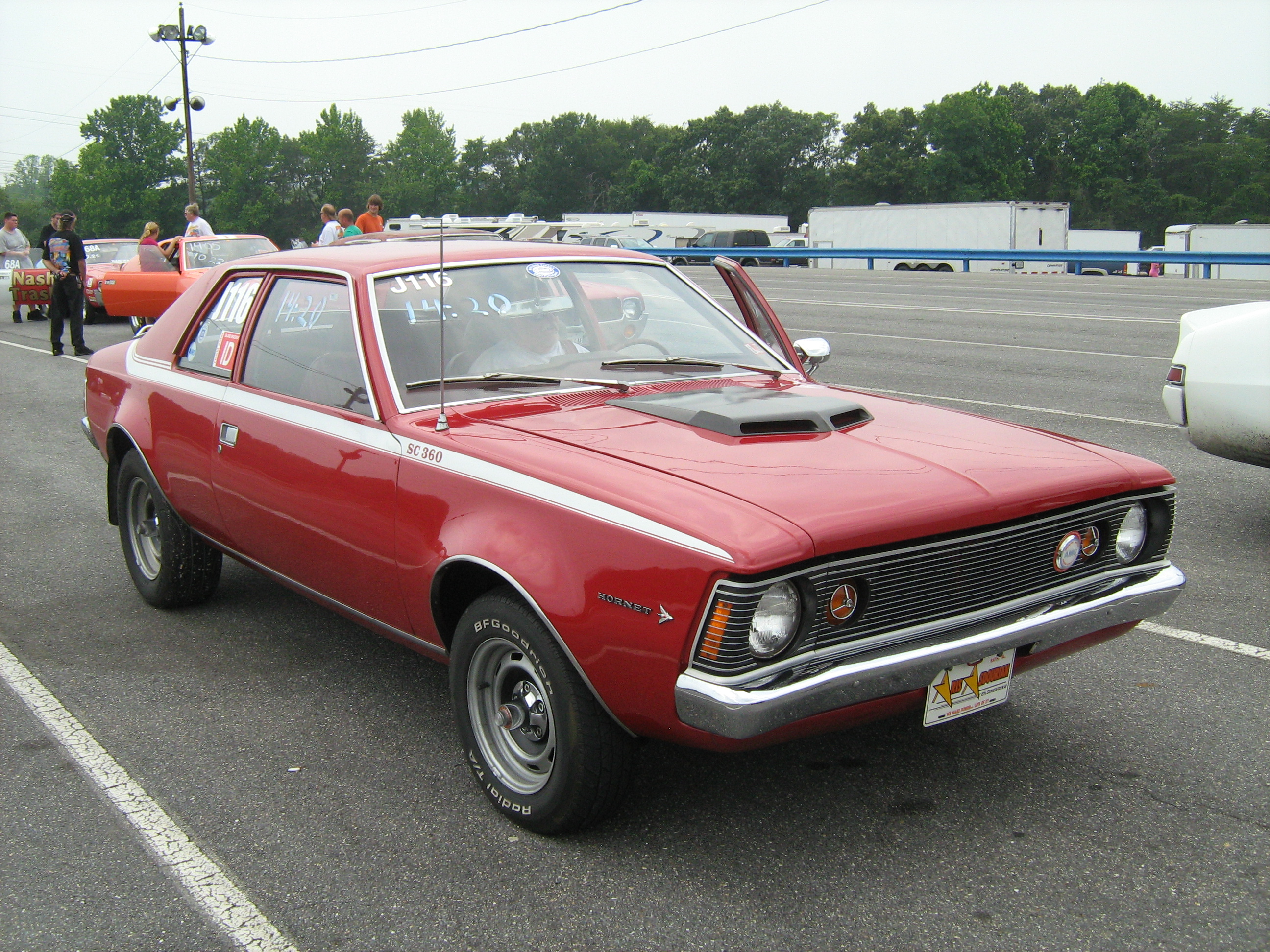
11. **1971 AMC Hornet SC/360**
American Motors Corporation (AMC) consistently defied convention, carving out a unique identity in the automotive world, and the 1971 AMC Hornet SC/360 is a shining example of their distinctive approach to muscle. Often overlooked and perhaps not considered as visually striking as some of its contemporaries like the Nova, the Hornet SC/360 possessed a series of hidden strengths that made it a truly formidable and underrated performer. AMC’s ingenuity often centered on efficiency and spirited dynamics.
Beneath its modest exterior, the SC/360 packed a potent 360 cubic-inch V8 engine. When equipped with the optional Ram Air setup, this powerplant delivered a robust 285 horsepower. This figure, combined with the Hornet’s remarkably light weight of just over 3,000 pounds, translated into impressive real-world performance. Reviewers of the era praised its quickness, with the SC/360 capable of achieving sub-7-second 0-60 mph times and high 14-second quarter-mile runs, putting it squarely in muscle car territory.
Beyond its straight-line speed, the Hornet SC/360 was also recognized for its exceptional handling characteristics. Many contemporary reviewers claimed it was among the best-handling muscle cars of its day, a testament to its well-engineered chassis and lighter footprint. This blend of spirited acceleration and agile road manners offered a compelling package that differentiated it from many of its heavier, less nimble competitors. It was a true driver’s car, delivering a visceral experience that transcended its humble origins.
Today, the 1971 AMC Hornet SC/360 remains a rare and rewarding find for collectors who appreciate AMC’s unique contribution to the muscle car genre. Its blend of a powerful small-block V8, light weight, and acclaimed handling makes it a distinctive alternative to the more common muscle offerings. For those seeking an authentic ’70s muscle car with a unique story and undeniable performance, the SC/360 offers an accessible entry point into the world of American Motors’ performance vehicles.
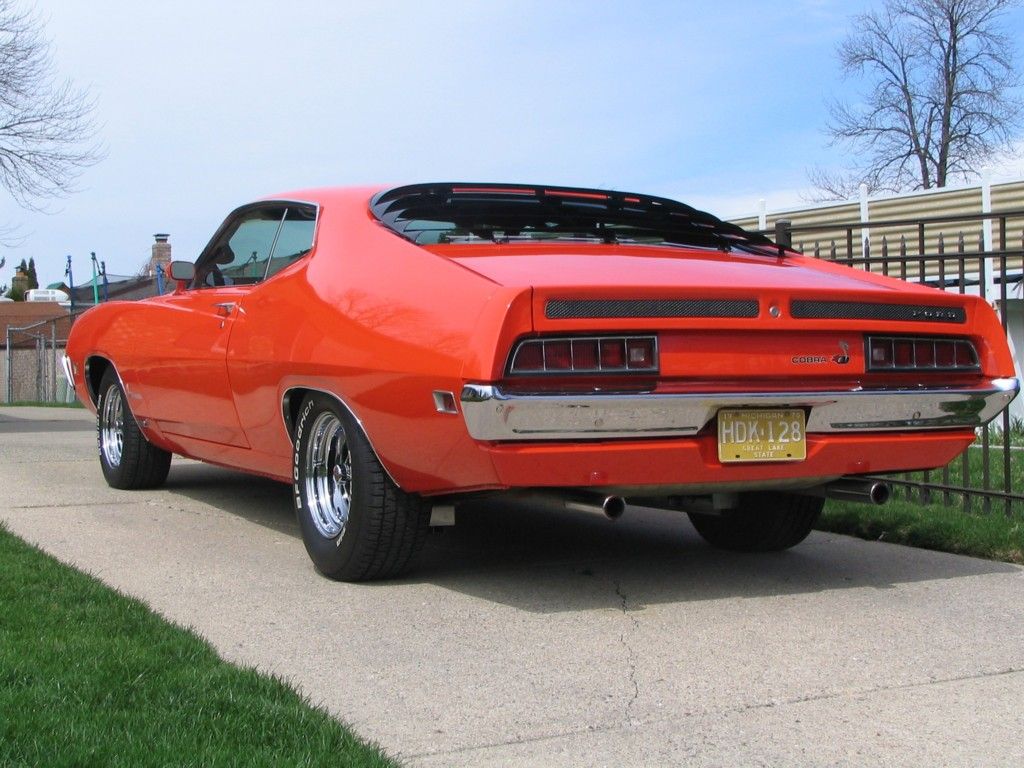
12. **1970 Ford Torino 302**
While the high-performance Ford Torino Cobra and Super Cobra Jet models rightfully claimed headlines with their massive engines, the base 1970 Ford Torino with a 302 cubic-inch V8 engine offered a more understated, yet equally compelling, proposition. It embodied the classic muscle car proportions and aesthetic without demanding the premium price tag or the all-out performance figures of its celebrated siblings. This made it a respectable cruiser with strong, timeless lines that captured the essence of the era.
Under the hood, the 302 V8, while not “blazing fast” in stock form compared to the era’s monster engines, provided a solid and reliable foundation. It delivered adequate power and torque for spirited daily driving and cruising, offering a satisfying V8 rumble and enough grunt to enjoy the open road. Crucially, the base Torino’s engineering made it inherently robust and receptive to performance enhancements, making it an attractive platform for enthusiasts looking to build a personalized street machine.
These base Torino models have remained remarkably affordable precisely because they weren’t the top-tier trims, often flying under the radar of serious collectors focused on rare, high-horsepower variants. This oversight, however, has become a significant advantage for today’s budget-conscious enthusiast. Their solid bones, timeless design, and accessible parts network make them an excellent starting point for someone looking to build a streetable muscle car without the exorbitant costs associated with more prestigious models.
For those who appreciate classic Ford styling and the potential for a truly engaging driving experience without dropping big money, the 1970 Ford Torino 302 is a smart and often-overlooked choice. It offers a canvas for customization and a direct connection to a golden era of American automotive design, proving that authentic muscle car enjoyment doesn’t always require a six-figure investment.
Car Model Information: 1974 Ford Torino
Aka: Ford Fairlane (Venezuela)
Name: Ford Torino
Caption: 1970 Ford Torino Cobra SportsRoof
Manufacturer: Ford Motor Company
Production: 1968–1976
Class: Mid-size car,muscle car
Layout: FR layout
Related: Mercury Montego
Assembly: ubl
Predecessor: Ford Fairlane (Americas)
Successor: Ford LTD II
Categories: 1960s cars, 1970s cars, All Wikipedia articles written in American English, All articles with vague or ambiguous time, Articles with short description
Get more information about: Ford Torino
Buying a high-performing used car >>>
Brand: Ford Model: Torino
Price: $34,999 Mileage: 112,114 mi.
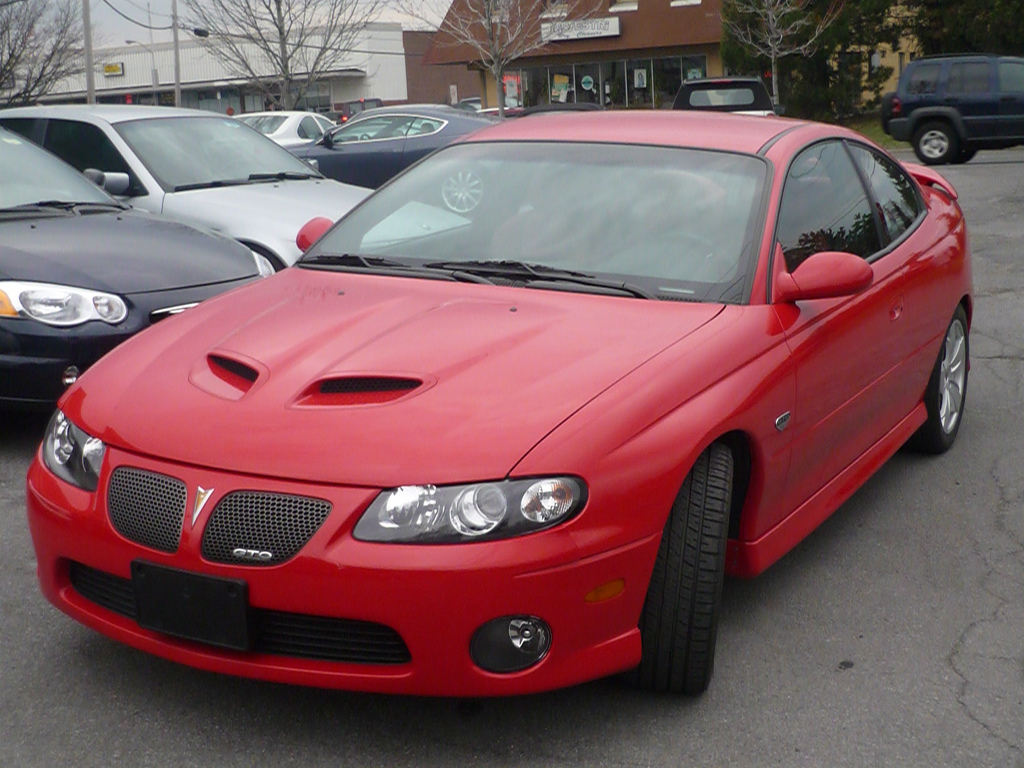
13. **2004–2006 Pontiac GTO**
After the iconic Pontiac Firebird departed the scene in 2002, leaving a void in the brand’s performance lineup, General Motors made a surprising but ultimately astute decision: they imported the Holden Monaro VZ from Australia and rebranded it as the 2004-2006 Pontiac GTO. This move, while initially met with mixed reactions regarding its relatively subdued styling compared to its flamboyant predecessors, ushered in a new era of performance that, by all objective measures, lived up to the legendary GTO nameplate.
Powering this modern muscle car was a potent 6.0-liter V8 engine, a direct descendant of Chevrolet’s highly regarded LS small-block family. This engine delivered impressive horsepower and abundant torque, ensuring the GTO was a genuine performer capable of exhilarating acceleration. Crucially, it was available with a manual transmission and channeled its power to the rear wheels, adhering to the fundamental tenets of traditional muscle car architecture, providing an authentic and engaging driving experience that was missing from much of the market at the time.
One of the most compelling aspects of the 2004-2006 GTO for enthusiasts today is its combination of readily available and affordable performance upgrades. It offered all the easy and cheap modification potential associated with earlier Firebirds, but wrapped in a dramatically improved interior and ride quality. This blend made it an incredibly versatile machine, equally adept at comfortable highway cruising or spirited backroad assaults, offering a level of refinement often lacking in older muscle cars.
Despite its strong performance credentials and budget-friendly pricing in the used market, the 2004-2006 GTO remains an underappreciated modern classic. Its subtle styling perhaps didn’t scream “muscle car” loudly enough for some, but for those who value substance over flash, it represents an exceptional value. It’s a genuine rear-wheel-drive V8 coupe that offers thrilling performance, modern amenities, and a direct link to a storied name, all without demanding a premium price.
Car Model Information: 1966 Pontiac GTO Coupe
Name: Pontiac GTO
Caption: 2005 Pontiac GTO
Manufacturer: Pontiac (automobile),Holden
Class: Mid-size car,Compact car,Mid-size car
Production: 1963–1974,2003–2006
Predecessor: Pontiac Tempest
Layout: Front-engine, rear-wheel-drive layout
ModelYears: 1964-1974 2004-2006
Categories: 1970s cars, 2000s cars, All articles with unsourced statements, Articles with short description, Articles with unsourced statements from October 2008
Get more information about: Pontiac GTO
Buying a high-performing used car >>>
Brand: Pontiac Model: GTO
Price: $59,991 Mileage: 4,408 mi.
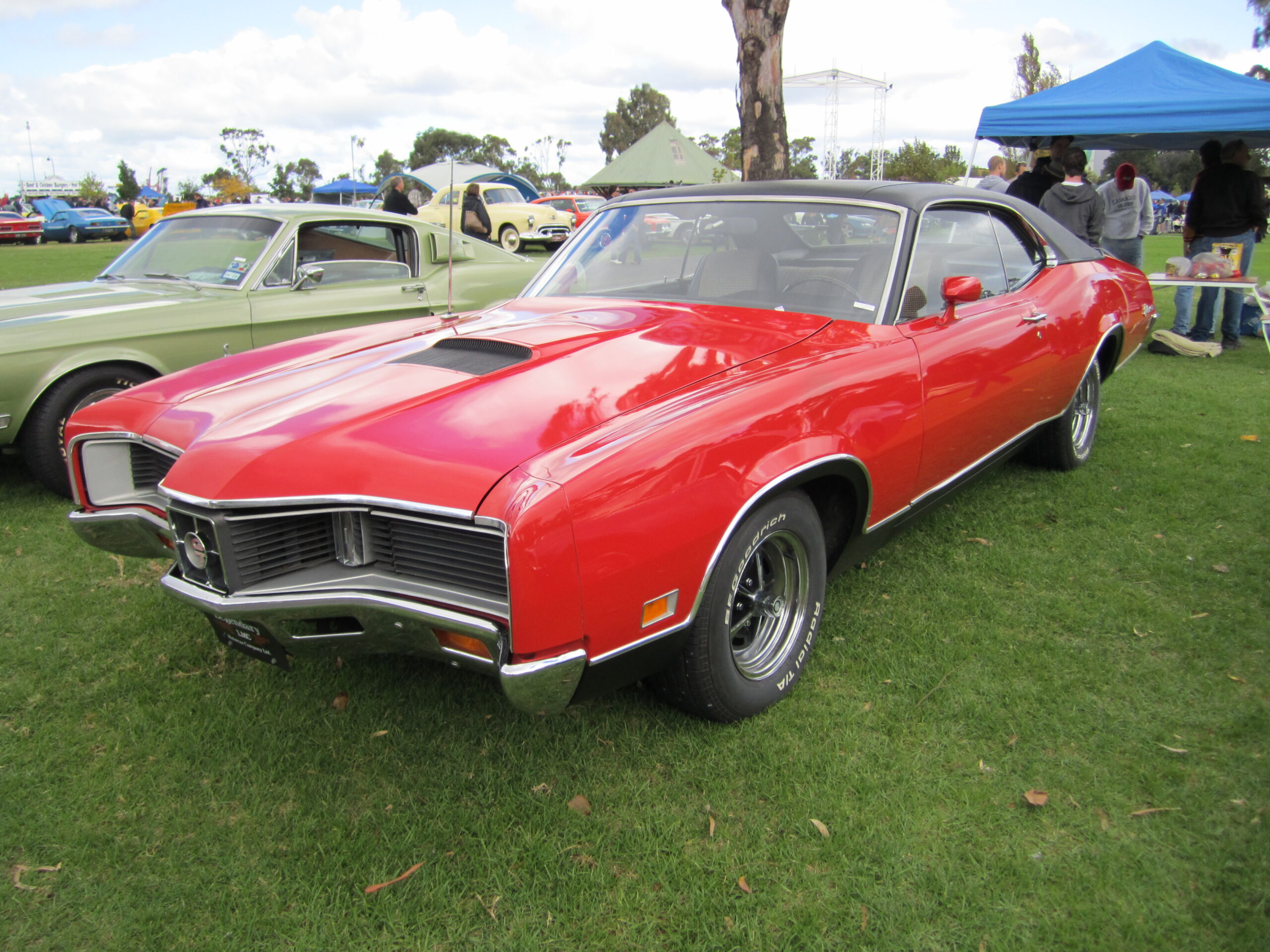
14. **1970 Mercury Cyclone GT**
The 1970 Mercury Cyclone GT presented a fascinating fusion of aggressive styling and respectable performance, yet it consistently found itself overshadowed by its more popular and ubiquitous contemporaries, notably the Ford Mustang and Chevrolet Camaro. Positioned as a sportier, more upscale offering within the Mercury lineup, it aimed to blend performance with a touch of sophistication, creating a distinct character that unfortunately didn’t fully resonate with the traditional muscle car audience.
At the heart of the 1970 Mercury Cyclone GT was a robust 351 cubic-inch Cleveland V8 engine, a powerhouse capable of producing a solid 300 horsepower. This small-block V8 ensured the Cyclone GT was a legitimate performer, delivering strong acceleration and a satisfying V8 growl. The aggressive front grille design hinted at its performance capabilities, setting it apart visually and underscoring its sporting intentions, even if it didn’t always grab the spotlight it deserved.
However, the Cyclone GT faced an uphill battle. Its higher price point and Mercury’s brand positioning, which leaned more towards luxury, often deterred traditional muscle car buyers who were typically seeking raw, unadulterated performance over stylistic flourishes. This internal competition within the Ford family and Mercury’s luxury branding meant the Cyclone GT, despite its power and distinctive looks, struggled to establish a strong identity in a crowded market.
Today, the 1970 Mercury Cyclone GT is a truly underrated classic, offering a unique blend of aggressive styling, potent small-block V8 performance, and a touch of vintage Mercury luxury. For collectors and enthusiasts looking for a muscle car that stands out from the more common offerings, the Cyclone GT provides a compelling alternative. It’s a testament to Mercury’s attempt at a performance-oriented vehicle, offering both power and panache in a package that remains surprisingly accessible and engaging.
As our comprehensive exploration concludes, it becomes clear that the world of small-block V8 muscle cars is far richer and more diverse than mainstream narratives often suggest. Beyond the titans of the genre lie these hidden gems, each with its own compelling story, distinctive engineering, and a performance legacy that continues to impress. These aren’t just relics of a bygone era; they are accessible, drivable, and endlessly enjoyable machines that embody the true spirit of American muscle. They offer a tangible connection to automotive history, proving that unparalleled style and exhilarating power don’t always have to come with an exorbitant price tag. For the discerning enthusiast, these underrated marvels represent not just a smart purchase but a thrilling rediscovery of what makes classic cars truly special, waiting to be cherished and unleashed on the open road. Dive in, and you might just find your next automotive obsession.


